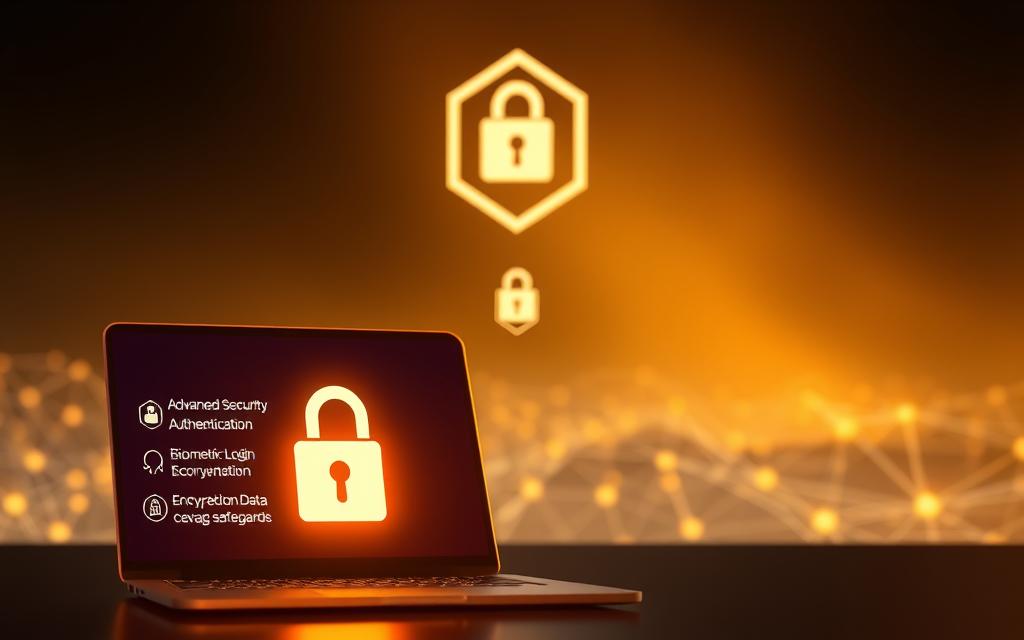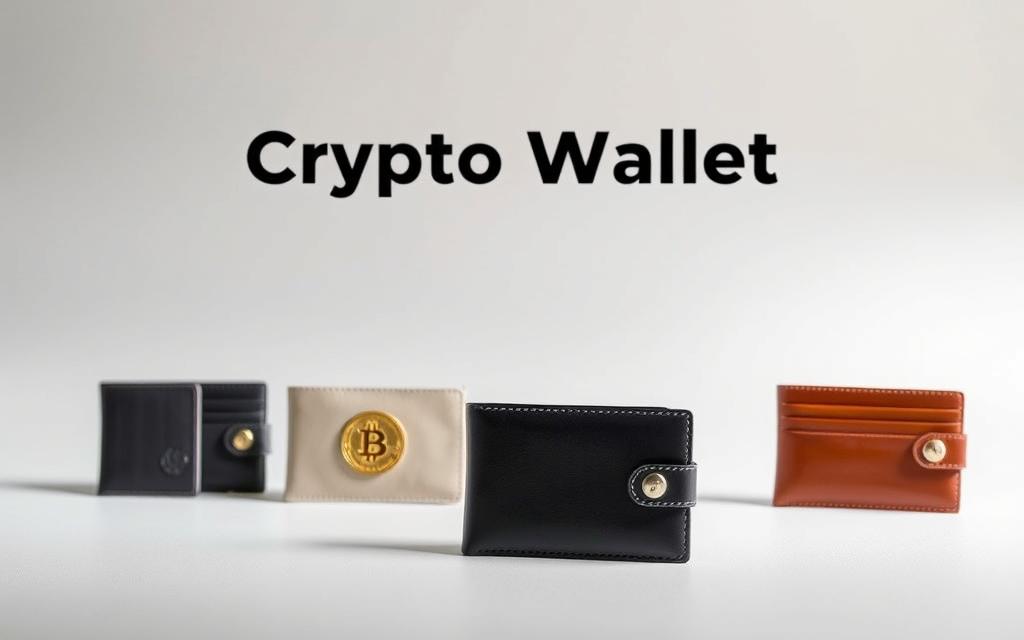Table of Contents
With over 100 million users worldwide, Crypto.com ranks among the top platforms for digital asset trading. The service offers a full ecosystem, including an exchange, wallet, Visa card, and staking options. But does its security match its popularity?
Recent upgrades address past concerns. After a 2022 breach, the company strengthened protections with multi-layer verification and cold storage solutions. A $150 million insurance policy now covers user funds, backed by ISO certifications.
Regulatory compliance adds credibility. The platform operates legally in 49 U.S. states and holds international licenses. These factors suggest reliability, though market volatility remains an inherent risk in digital asset trading.
This analysis examines key safety features, helping you decide if the exchange meets your security standards.
1. Introduction to Crypto.com: A Global Cryptocurrency Platform
Since its 2016 launch, this Singapore-based platform has grown into a powerhouse for digital asset services. Today, it serves 50 million users with tools spanning trading, payments, and passive income.
Overview of Services
The exchange supports 250+ coins for spot trading, alongside a DeFi Wallet for self-custody. Users access fiat gateways with 20+ currencies, bridging traditional finance and digital assets.
Unique offerings include a Visa Card with cashback rewards and Crypto Earn, delivering up to 8% APY on staked holdings. An NFT marketplace rounds out its ecosystem, appealing to collectors and creators alike.
Regulatory Compliance and Licenses
As the *first* crypto firm with ISO 22301 and 27701 certifications, the business prioritizes security. It operates under MAS in Singapore, ASIC in Australia, and FinCEN’s MSB license in the U.S.
Partnerships like TIME magazine’s crypto payments highlight its mainstream adoption. A $1B+ insurance policy through Ledger Vault further safeguards user investments.
2. Is Crypto.com Legitimate? Assessing Its Trustworthiness
Regulatory compliance separates reputable exchanges from risky ventures—a distinction Crypto.com upholds with multiple licenses. The platform operates under stringent frameworks, ensuring user funds and data remain protected. Below, we dissect its legal standing and security benchmarks.
Licensing and Regulatory Approvals
Crypto.com holds a Money Services Business (MSB) license with U.S. FinCEN, enabling operations in 49 states—excluding New York due to NYDFS restrictions. Internationally, it’s registered with FINTRAC in Canada and Dubai’s VARA, adhering to anti-money laundering (AML) laws.
Compared to rivals like Coinbase (NYSE-listed) and Binance (global restrictions), Crypto.com’s 49-state coverage demonstrates proactive compliance. Note: Users in unsupported regions must verify local regulations before trading.
Industry Certifications and Security Standards
The exchange meets PCI DSS Level 1 for payment processing—the highest tier for financial data protection. Singapore’s Cyber Trust Mark (Tier 5) further validates its defenses against cyber threats.
- ISO 27001: Ensures systematic management of sensitive data, audited annually.
- Penetration Testing: Conducted by Halborn to identify vulnerabilities.
- Audits: Financials reviewed by Ernst & Young; smart contracts vetted by Zokyo.
For deeper insights into cold wallet storage and authentication tools, explore our guide on Crypto.com’s security protocols.
3. Crypto.com’s Security Features: How It Protects Users
Cutting-edge security protocols define top-tier cryptocurrency services. The platform combines offline storage, multi-factor checks, and real-time monitoring to safeguard assets. Below, we break down its layered defenses.
Cold Wallet Storage and Fund Security
100% of user funds stay in offline cold wallets, eliminating hot wallet risks. Private keys split across geographically distributed locations, requiring multi-signature approval for access.

This multi-sig system ensures no single point of failure. Even if breached, attackers can’t move assets without physical key fragments.
Multi-Factor Authentication (MFA) and Anti-Phishing Tools
Mandatory 2FA via Google Authenticator or Authy blocks unauthorized logins. Users can add biometric scans or hardware keys like YubiKey for extra layers.
An anti-phishing code system verifies legitimate emails. Custom codes display in authenticated messages, alerting users to fake requests.
Withdrawal Delays and Email Alerts
New withdrawal addresses trigger a 24-hour hold, preventing rushed theft. Users receive real-time alerts for every transaction, with AI flagging unusual activity.
- Three-confirmation rule: Staff manually review large withdrawals.
- Whitelisting: Pre-approved addresses bypass delays after initial vetting.
These measures balance convenience with robust account protection.
4. Potential Risks of Using Crypto.com
Navigating digital asset platforms requires understanding inherent risks alongside benefits. While Crypto.com employs advanced safeguards, users should evaluate vulnerabilities like insurance gaps and authentication flaws.
Non-FDIC Insurance and Crypto Volatility
Unlike traditional banks, Crypto.com lacks FDIC coverage for digital assets. Its $250K Worldwide Account Protection Program (WAPP) reimburses losses from platform failures—not market swings. Investors face:
- Spread risks: 0.4% fees vs. 0.1% on pro exchanges
- CRO token volatility: Rewards fluctuate with market conditions
- Platform dependency: Service outages during crashes may delay trades
2FA Vulnerabilities and Phishing Threats
The 2022 breach exposed 483 accounts due to SMS-based 2FA weaknesses. Hackers exploit SIM-swaps to intercept codes, bypassing basic security layers. Key precautions include:
- Using Google Authenticator or hardware keys instead of SMS
- Enabling whitelisting for withdrawals
- Monitoring account activity via real-time alerts
For deeper strategies to secure your crypto assets, review proactive defense tactics against phishing and breaches.
5. The 2022 Crypto.com Hack: What Happened and Lessons Learned
January 2022 marked a critical moment for Crypto.com’s security team. Hackers exploited an API key vulnerability, draining $34 million from 483 user accounts. The stolen assets included 4,836 ETH and 443 BTC—a stark reminder of digital asset risks.

Details of the Security Breach
The attack unfolded over 48 hours, from detection on January 17 to resolution by January 19. Hackers bypassed two-factor authentication (2FA) via SMS, highlighting flaws in reliance on text-based verification. Accounts without whitelisting or hardware keys were primary targets.
“The breach was a wake-up call—not just for us, but for the entire industry.”
Crypto.com’s Response and Reimbursements
Within two days, the exchange fully reimbursed affected users from its reserves. This swift action aimed to restore trust, coupled with a transparency report detailing the incident. The company also launched its Worldwide Account Protection Program (WAPP), insuring funds up to $250K per user.
Post-Hack Security Upgrades
Today, the platform enforces stricter safeguards:
- Behavioral biometrics: AI analyzes typing patterns to flag suspicious logins.
- Hardware Security Modules (HSMs): Physical devices now store sensitive keys.
- 2-hour escalation protocol: Critical incidents trigger immediate team response.
These measures reduce future risk, proving the platform’s commitment to security. For users, the lesson is clear: always opt for app-based 2FA over SMS.
6. How to Secure Your Crypto.com Account: Best Practices
Proactive security measures separate experienced traders from vulnerable investors in digital asset markets. Crypto.com provides robust tools, but their effectiveness depends on proper configuration by users. Below, we outline critical steps to lock down your account against threats.

Using Authenticator Apps Instead of SMS for 2FA
SMS-based two-factor authentication remains a weak link, as seen in the 2022 breach. Switch to Google Authenticator or Authy for generated codes that hackers can’t intercept via SIM swaps.
For maximum protection, pair app-based 2FA with a YubiKey. This hardware device requires physical confirmation for logins, blocking remote attacks.
Setting Up Whitelisted Withdrawal Addresses
Whitelisting adds a critical checkpoint for fund movements. New addresses undergo a mandatory 24-hour hold, giving you time to cancel unauthorized withdrawals.
- Tiered confirmation: Enable address verification via email and 2FA
- One-way protection: Whitelisted addresses can’t be modified during the holding period
Regular Monitoring and Alerts
Real-time notifications transform your phone into a security hub. Customize alerts for:
- Login attempts from new devices
- Transactions exceeding set thresholds
- Password or 2FA changes
Combine these with Quadency’s portfolio tracker for cross-exchange monitoring. Set session timeouts to 5 minutes—short enough to prevent idle account access.
“A dedicated email alias for crypto activities reduces phishing risks by 73%, according to Chainalysis’ 2023 Security Report.”
These layered defenses create a security framework that adapts to evolving threats. While no system is foolproof, disciplined users significantly reduce withdrawal risks and unauthorized access.
7. Comparing Crypto.com App vs. Exchange: Where to Keep Your Assets
Choosing where to store digital assets impacts security and trading flexibility. The platform offers three primary options: the mobile app, centralized exchange, and non-custodial DeFi wallet. Each serves distinct purposes based on transaction frequency and risk tolerance.

Centralized vs. Non-Custodial Options
The mobile app provides convenience with instant purchases using credit cards or bank transfers. However, it charges 0.4% spreads versus the exchange‘s 0.04% maker fees for limit orders.
For full control, the DeFi wallet supports 700+ coins and DApp connectivity. Unlike the exchange, users manage private keys—eliminating third-party custody but increasing personal responsibility.
Pros and Cons of Each Platform
Withdrawal limits vary significantly:
- App: $50K daily cap with 24-hour delays for new addresses
- Exchange: $1M daily limit, ideal for institutional traders
Security technologies differ too. The exchange uses MPC (Multi-Party Computation) wallets, while the DeFi wallet relies on traditional seed phrases. Insurance coverage also varies:
- Exchange: $250K protection through WAPP
- DeFi Wallet: No platform insurance (self-managed risk)
“Diversify storage like investments—70% cold wallets, 20% exchanges for trading, 10% apps for liquidity.”
Advanced traders benefit from the exchange‘s OCO orders and trailing stops. Meanwhile, the app suits beginners with its simplified interface and fiat on-ramps.
8. Crypto.com’s Customer Support and Transparency
When funds are at stake, responsive support becomes non-negotiable. The platform delivers 24/7 assistance across multiple channels, prioritizing urgent account issues. This commitment to service excellence complements its technical safeguards.
24/7 Support Availability
In-app chat responses average 23 minutes—faster than many traditional banks. Enterprise users access dedicated managers, while general inquiries route through:
- Twitter/X: Public troubleshooting (@CryptoComHelp)
- Telegram: Community-driven assistance groups
- Multilingual teams: Covering 15+ languages including Spanish and Mandarin
The bug bounty program incentivizes white-hat hackers, offering up to $100K per vulnerability found. This crowdsourced security approach strengthens protections for all customers.
Handling Disputes and Unauthorized Transactions
Priority cases resolve within 72 hours per SLA. Visa card chargebacks follow standardized procedures:
- Submit transaction evidence via secure portal
- Fraud team verifies within 48 business hours
- Provisional credits issued for validated claims
“Our Merkle tree audits prove 1:1 reserves—every dollar deposited matches our holdings.”
Quarterly proof-of-reserves reports allow customers to verify asset backing independently. Combined with insured custodial wallets, this transparency builds confidence in the service.
9. Conclusion: Is Crypto.com Safe for Your Cryptocurrency Needs?
Balancing security with convenience remains crucial for digital asset holders. The platform excels with 100% cold storage and rigorous regulatory compliance, making it a top choice for active traders. Its insured custodial wallets and Crypto.com’s security protocols add layers of protection.
Centralized exchange risks persist, like market volatility and phishing threats. Long-term investors should pair the service with hardware wallets for large holdings. The 2022 breach underscores the need for app-based 2FA and withdrawal whitelisting.
Final verdict? A legitimate platform with enterprise-grade security—when users enable all account protections. Ideal for frequent trading, but diversify storage for passive holdings.
FAQ
What services does Crypto.com offer?
The platform provides trading, staking, a Visa debit card, and a non-custodial wallet. Users can buy, sell, and store digital assets with competitive fees.
Is Crypto.com regulated?
Yes, it holds licenses in multiple jurisdictions, including the US, UK, and EU. Compliance with financial authorities ensures legal operations.
How does Crypto.com protect user funds?
Cold storage secures 100% of customer deposits. Multi-factor authentication and withdrawal whitelisting add extra layers of defense.
What happened during the 2022 security breach?
Hackers bypassed 2FA, affecting 483 accounts. The company reimbursed losses and strengthened protocols, including mandatory MFA resets.
Are assets insured on Crypto.com?
Unlike FDIC-backed banks, cryptocurrency isn’t federally insured. The platform maintains a 0M insurance policy for hot wallet breaches.
Which is safer—the app or the exchange?
The exchange offers advanced trading tools, while the app simplifies transactions. Both use the same security infrastructure for protection.
How responsive is customer support?
Assistance is available 24/7 via live chat and email. Complex issues may require escalation, but most queries get resolved promptly.
Can I withdraw funds anytime?
Yes, though large transactions may trigger delays for manual review. Whitelisting addresses speeds up future withdrawals.
Should I use SMS or an authenticator app for 2FA?
Authenticator apps like Google Authenticator are more secure. SMS codes can be intercepted through SIM-swapping attacks.









